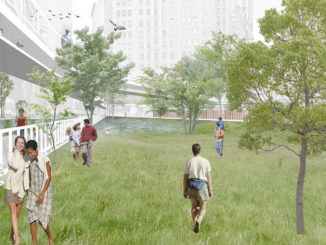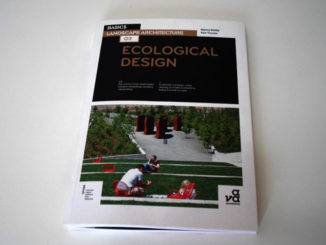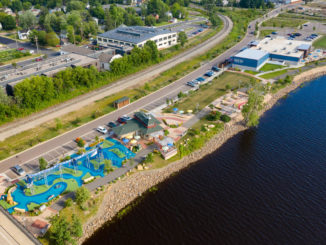Winner of the 2022 WLA Awards – Award of Excellence in the Concept – Design category
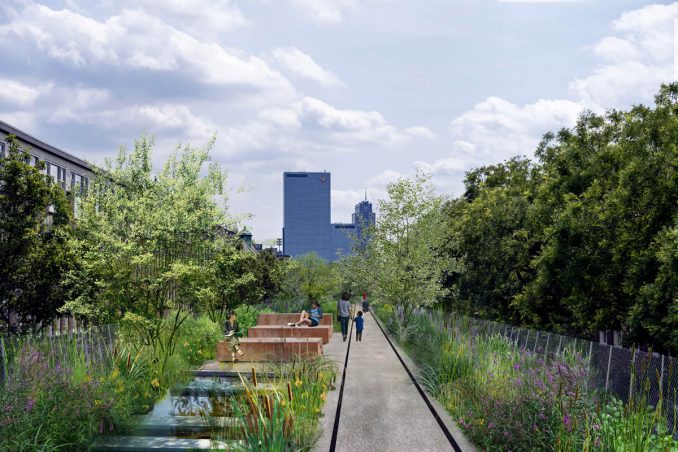
On 2 June 2006, the last train ran on the Hofplein line from Den Hague to Rotterdam. Since then, Rotterdammers, local residents, tenants of the arches, Rotterdam visitors, have all dreamed of a park on the Hofbogen for years. A park works as a spine, transforming the monumental viaduct from barrier to the backbone, offering a slow landscape designed for walkers rather than the train passengers, a safe living environment for humans and animals, a place to stroll, meet, connect, stay, relax, play, and forage at an elevated landscape. With a length of 2 kilometers (1.2 miles) and an average width of only 8 meters (25 feet), the Hofbogenpark will be the longest and narrowest roof park in the Netherlands.
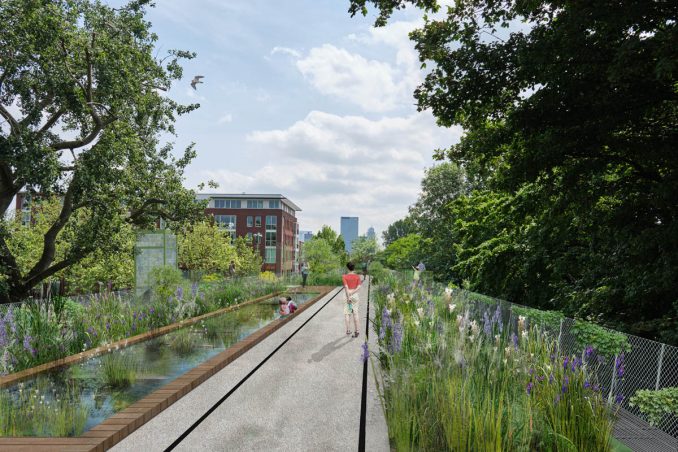
As a city in the Dutch delta, Rotterdam is vulnerable to climate change. The city, therefore, is an international frontrunner in sustainable water management. As both a water and ecological reservoir, Hofbogenpark showcases innovative climate-adaptive urban solutions. Rainwater from the roof and surroundings is harvested and cleaned by natural processes (helophyte filter) in the park and stored in an aquifer. In times of drought, the stored rainwater can be reused in the Hofbogenpark for irrigation and other purposes. It offers its visitors a pleasant and welcome space for strolling and lingering in with flowing water, enjoying the stillness of a mirror pond, and entertainment in the fountains.
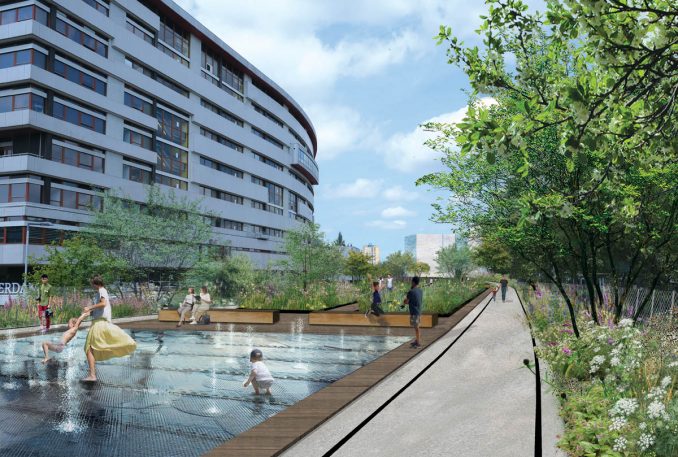
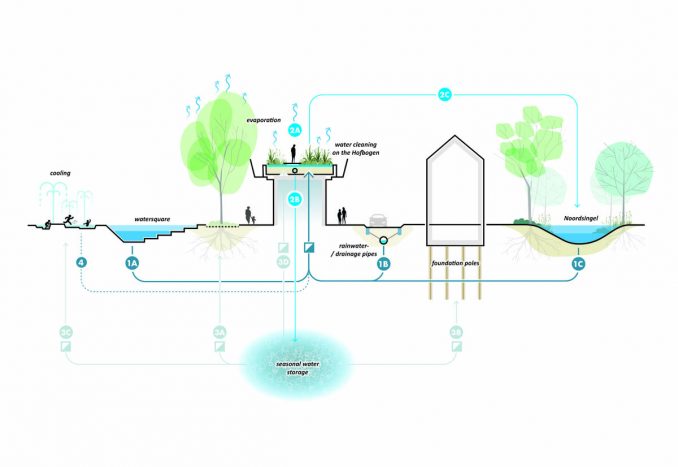
With its function as a city park, Hofbogenpark adds a new layer for the city – a railway landscape that steadily and smoothly brings visitors through the city, a landscape that moves. The path, park edge, and maintenance path ensure steady continuity; the rhythm pulses in the repetition of balconies, staircases, sleepers, platforms, and pergolas, offer¬ing places for various activities. The landscape varies from buzz and activities of urban life to calmness, relaxation, and flowing water in the northern neighborhoods.
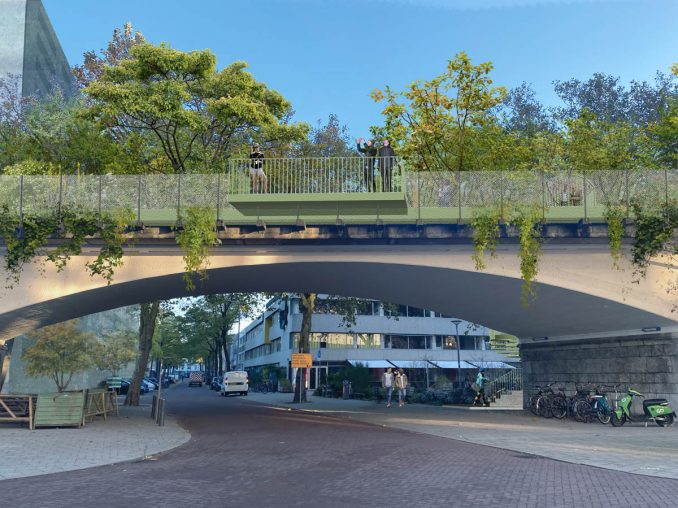
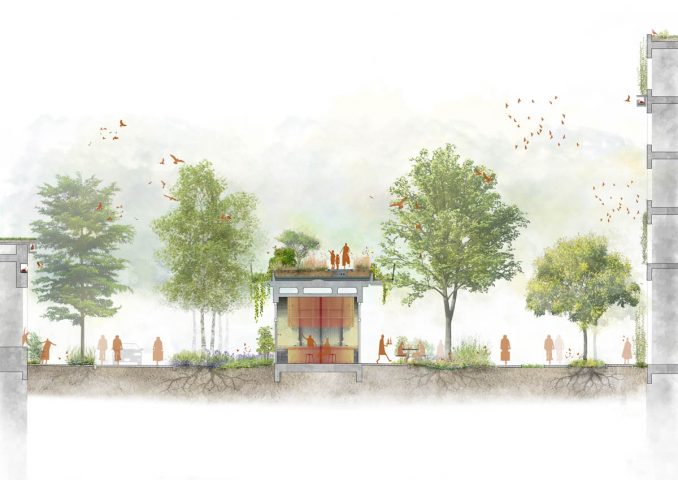
Embracing inclusivity, Hofbogenpark creates space for a biodiverse company of people, plants, and animals. The line is continuous, but the vegetation and associated biotopes slowly change along the walk. Native planting and naturalistic maintenance will be at hand, creating a dynamic landscape from season to season. Dry and wet, open and enclosed landscapes offer migration space, shelter, and food for bees and butterflies, toads, bats, birds, and hedgehogs. The planting base suits an urban variant of a natural landscape – shrubs, grasses, and perennials. Along the park, the planting changes through different neighborhoods, responding to the different atmosphere. With colors and scents, the carefully selected species are placed around the resting places. Privacy and openness are shaped by different heights and transparency of the planting as well. With all the needs in mind, we think of ways to create the habitats. Porous railway sleepers will be home to insects and toads, the park edge – to the bees and stacks of branches will host smaller. The Hofbogenpark connects to a larger ecological corridor and brings nature deep into the heart of the city.
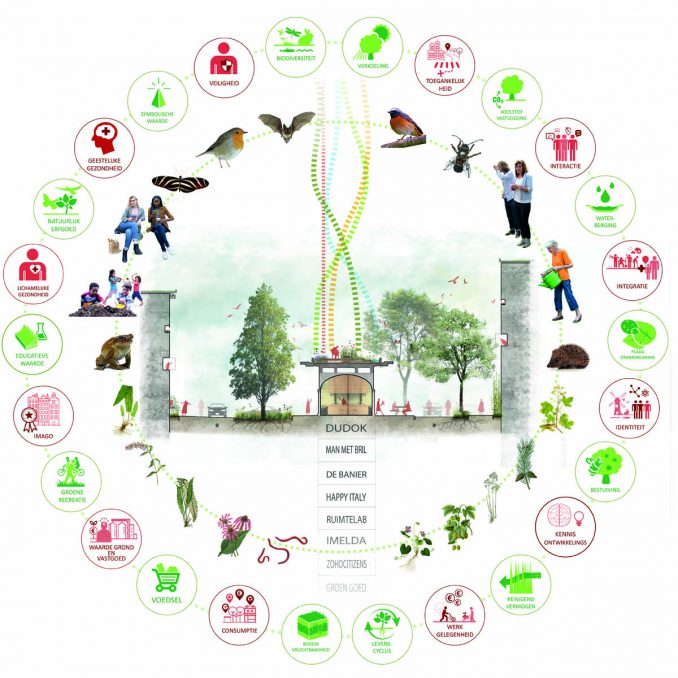
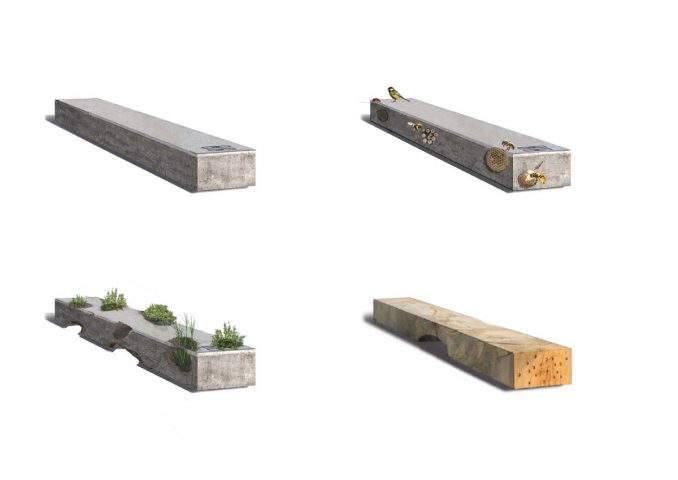
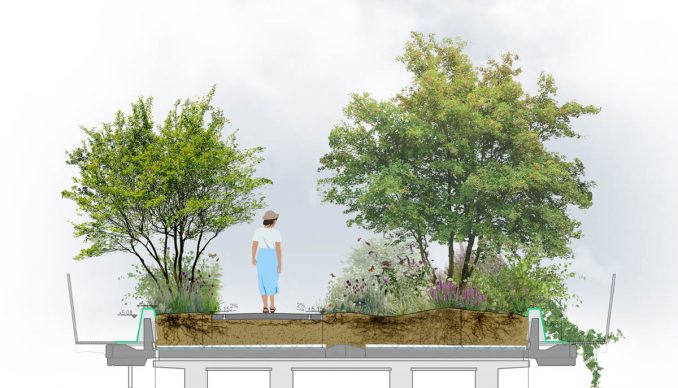
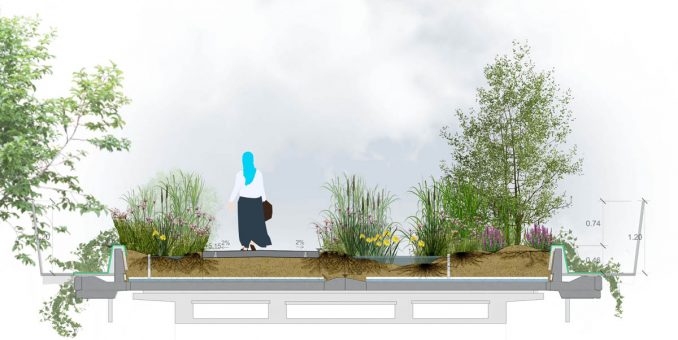
Hofbogenpark
Landscape Architect | DE URBANISTEN
Collaboration | DS Landschapsarchitecten, De Dakdokters
Location | Rotterdam, The Netherlands
Year | 2019 – ongoing
Client | Municipality of Rotterdam, Dudok Group
Image and Text Credits | DE URBANISTEN

